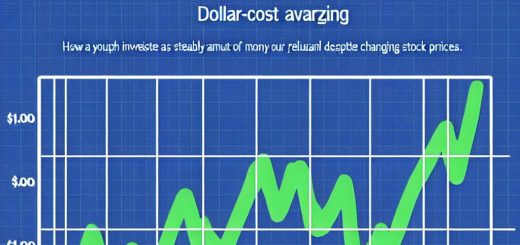What are ETFs and how do they work?
Understanding ETFs
Exchange-Traded Funds (ETFs) represent a hybrid investment vehicle that melds aspects of mutual funds and stocks. Resting at the intersection of flexibility and diversification, ETFs have become an indispensable part of the modern investor’s toolkit. With the unique trait of being traded like individual stocks, ETFs streamline the process of investing in a broad array of assets, ranging from equities to commodities and bonds. Designed with an arbitrage mechanism, ETFs ensure their prices remain closely tethered to their net asset value, although minor deviations are sometimes observed. This intricate design forms the bedrock of ETF operations and their appeal to investors, both novice and seasoned.
Structure of ETFs
At the core of ETFs lies a structural ingenuity that promotes accessibility and broadened exposure to diverse markets. An ETF’s construction involves pooling assets into a collective fund, which is then sliced into shares available for public trading. This method not only simplifies the process of diversification but also lowers the barrier for individual participation across various market segments. For instance, investors can own a fractional share of an ETF tracking an entire index like the S&P 500, or focus on niche industries such as technology or healthcare. The underlying benefit is the democratization of investing, where individual investors can gain exposure to a vast array of securities without the requirement of purchasing each underlying asset individually.
One defining characteristic of ETFs is their ability to be traded throughout the market’s open hours. This liquidity ensures that investors have the freedom to manage their funds to suit intraday opportunities or respond to market developments. The ease of trading further distinguishes ETFs from mutual funds, which typically allow transactions only at daily closing prices.
Functioning of ETFs
The operational integrity of ETFs hinges on precise replication. Whether managed passively or actively, the objective is usually to replicate the performance of a chosen index, asset class, or sector. In seeking this mimicry, ETFs employ two primary strategies: full replication and sampling.
In full replication, the ETF acquires all securities comprising the index in exact proportions, thus achieving a near-perfect mirror of the index’s behavior. This strategy ensures high fidelity in performance correlation, albeit with potential increased transaction costs due to the comprehensive acquisition of assets.
Sampling, on the other hand, utilizes a selection of securities that best approximate the index’s returns without holding every single asset. This cost-effective strategy proves particularly beneficial when tracking extensive indices, where owning every security would be financially cumbersome.
Creation and Redemption
An integral process supporting the functioning of ETFs is the creation and redemption mechanism, facilitated by Authorized Participants (APs). These are typically large financial institutions vested with the responsibility of maintaining the supply of ETF shares.
When demand for an ETF rises, APs engage in a ‘creation’ process. They purchase the requisite underlying assets and deliver these to the ETF issuer in exchange for newly created ETF shares, subsequently released to the market. This supply adjustment helps stabilize the ETF’s price against fluctuations.
Conversely, when investors seek to cash out, ‘redemption’ occurs. APs buy ETF shares from the open market and exchange them for underlying assets from the ETF issuer, which are then sold, reconciling the investor’s withdrawal with minimal market disruption. The elastomeric nature of this process ensures that ETF prices closely reflect their net asset values, mitigating substantial deviations.
Advantages of ETFs
The allure of ETFs lies in their multifaceted advantages, positioning them as a competitive investment option when juxtaposed with other funds:
1. Diversification: ETFs furnish investors with the convenience of accessing a wide breadth of assets and sectors without individually handpicking securities. This expansive exposure minimizes individual security risk and smoothens portfolio volatility.
2. Cost-Effectiveness: Recognition of ETFs’ typically lower expense ratios compared to mutual funds has increased their appeal, allowing investors to keep more of their returns by reducing overhead costs associated with portfolio management.
3. Tax Efficiency: Unlike mutual funds, which must execute cash redemptions that may trigger capital gains, ETFs’ in-kind creation and redemption process minimizes taxable events, enhancing their tax efficiency.
4. Flexibility: The ability to trade ETFs like stocks confers unique advantages such as short selling, buying on margins, and employing various trading strategies, offering investors latitude in their investment approaches.
Considerations When Investing in ETFs
Despite the myriad benefits, prospective ETF investors should proceed with informed caution. Market liquidity and tracking errors are pertinent considerations, with liquidity reflecting the ease of transaction execution and tracking error indicating discrepancies between ETF performance and the benchmark index. Such deviations may arise from management fees, sampling strategies, or unforeseen market conditions. Therefore, comprehending the specific nuances and sector orientations of potential ETF investments is paramount.
Market volatility, particularly in niche or emerging sectors, also poses risks. During tumultuous market periods, even well-constructed ETFs might see increased volatility that could affect valuation. As such, investor due diligence and an understanding of individual investment horizons and risk thresholds are crucial.
In summation, ETFs offer a multifaceted instrument for portfolio enhancement, suitable for a spectrum of investors. Their strategic flexibility, combined with diversification benefits, makes them a valuable asset for investment portfolios. For those seeking an in-depth insight into ETFs and tailored investing strategies, exploring resources such as brokerage platforms or consulting financial advisors is recommended.
Learn more about investing with ETFs here.
This article was last updated on: March 19, 2025







